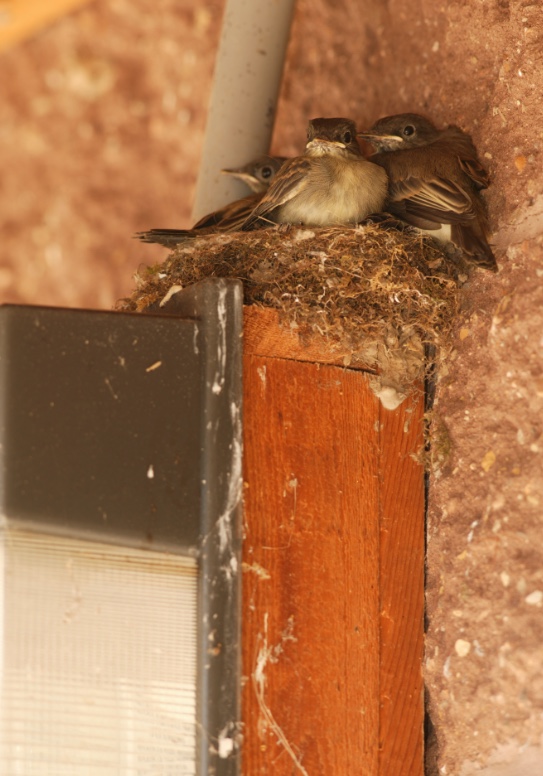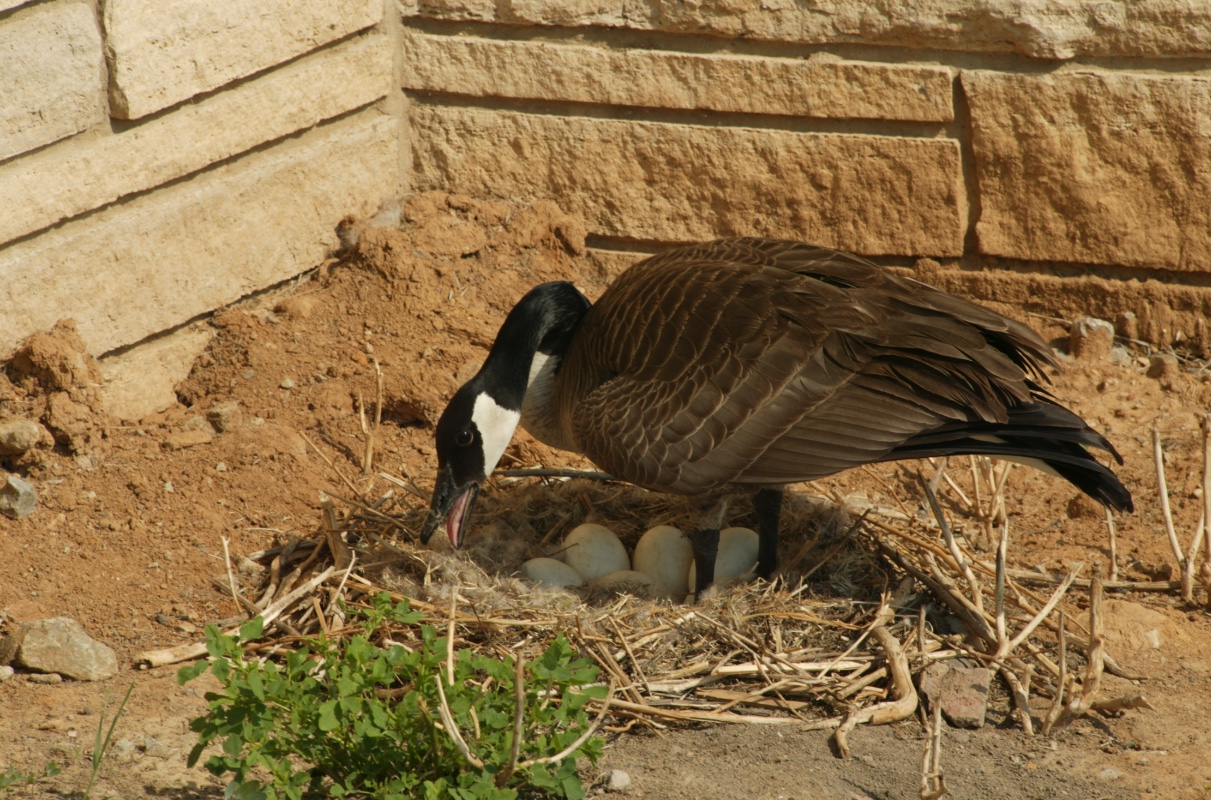Several species of bird readily nest near homes—Eastern Phoebe, American Robin, Northern Cardinal, Chimney Swift, House Sparrow, House Finch, and Barn Swallow, to name a few of the most common. Except for the House Sparrow, these birds (including their nests, eggs and young) are all protected species. This means their nests can not be removed until after the young have fledged (left the nest).
Chimney Swifts will nest inside chimneys. The other species will nest over doorways, on or in exterior lighting fixtures, on porch or deck railings, in hanging plants, in shrubs near the home, or in wreaths hanging on doors. If possible, use another exit until the young have fledged (four to five weeks from when the first egg is laid till the young leaving the nest). Once the young are gone, they do not return to the nest, so you may take the nest down and dispose of it. If the adults successfully raise a brood, they are likely to return the next year to nest close by.
Robins and cardinals can be quite aggressive when protecting their nests, especially robins. They will make loud alarm calls, fly at intruders, and may even try to peck at your head or arms. If you move away from the nest, they will stop their attack.
It is fairly common for Mallard ducks or Canada Geese to nest near homes, in landscaping, or next to pools. If possible, give the nest plenty of space until the young have hatched and left the nest (about 20 to 30 days from when the first egg is laid until the young leave the nest). Both species are protected so it is illegal to disturb or remove their nests, eggs, or young.
Canada geese will aggressively defend their nests. They will honk, flap their wings, and fly at intruders to drive them away. Geese are large enough to inflict injury, so try to keep your distance from the nest by keeping people and pets away from the area. Use another exit, if possible, if the nest is next to an exterior door.
Ducks or geese sometimes decide to hang out in swimming pools. Chase them away by waving your arms and making loud noises.

Photo: Adele Hodde, Illinois Department of Natural Resources

Photo: Adele Hodde, IDNR
The Wildlife Illinois website was authorized by the Illinois Department of Natural Resources (IDNR) in partial fulfillment of project W-147-T. The website was developed by the National Great Rivers Research and Education Center, 2wav, and the IDNR in partnership with the United States Department of Agriculture Animal and Plant Health Inspection Service Wildlife Services and University of Illinois Extension to provide research-based information about how to coexist with Illinois wildlife.